Craiova Art Museum, an incursion into the history of Oltenia
Craiova Art Museum, an incursion into the history of Oltenia
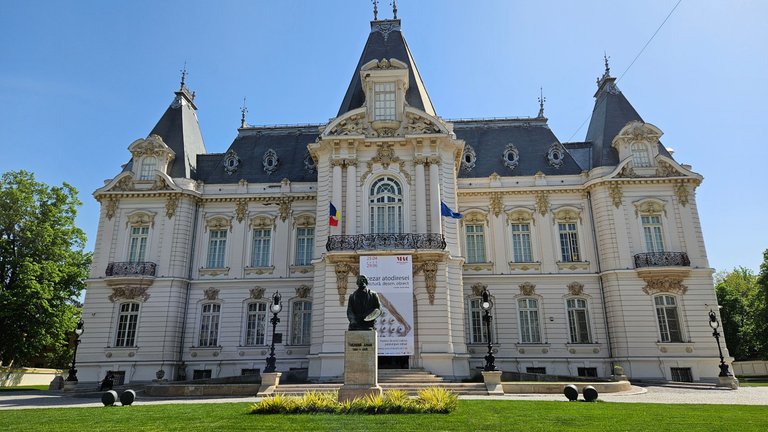
Hello travelers
See you back here with a new travel blog from Craiova(Romania) where I wish we can discover the amazing history of this city.
As I wrote before, our trips through this city were made by Bolt (taxi) is the cheapest way to get around here, Bolt dropped us quite close to this place but before we got here we visited a few shops, hehe.
Honestly, I didn't have the time to do a lot of research on this museum so I just let it all flow by itself.
Here you get here very easily you will find signs everywhere, we get in front of the museum and we can not believe what building we have in front of us, it is simply spectacular.
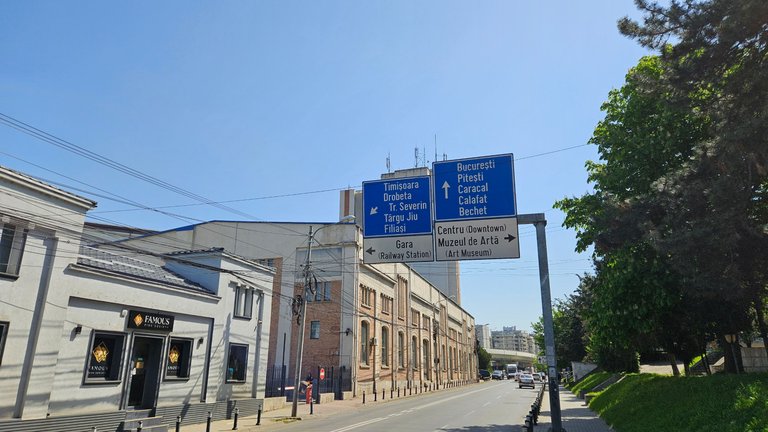
The entrance ticket cost 15lei/3euro/person and visiting hours are from 10am-5pm, closed on Mondays.
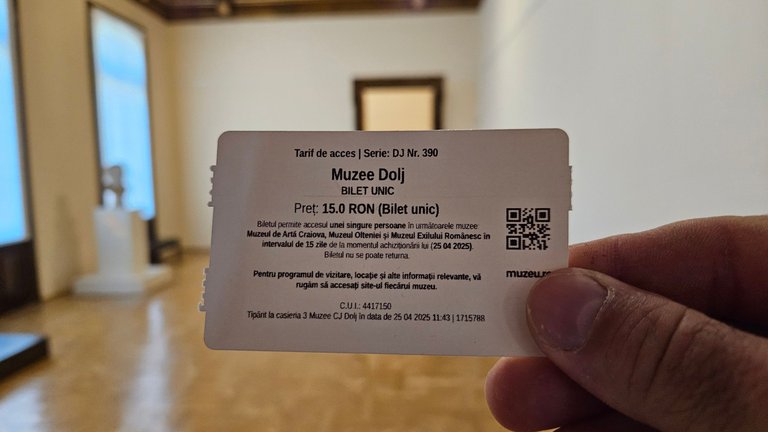
Even after the first steps the museum impressed me by its elegance, very large rooms, everything very well organized sim you can walk around here by yourself.
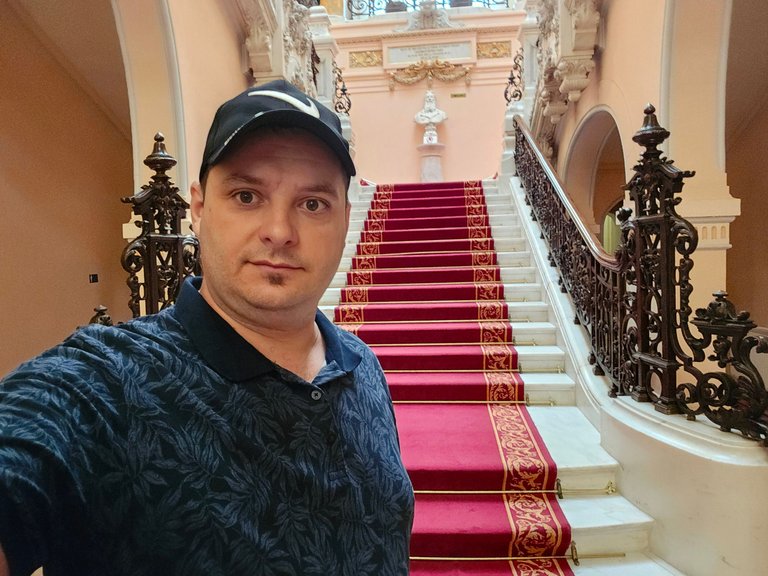
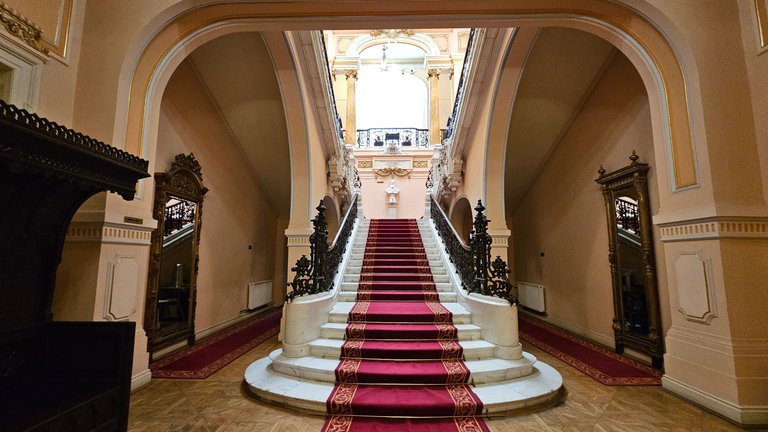
Let's go to the first room that we visited.

I'm not an art connoisseur, but from what I've read on the information boards it looks like there are some very important works of art on display here.


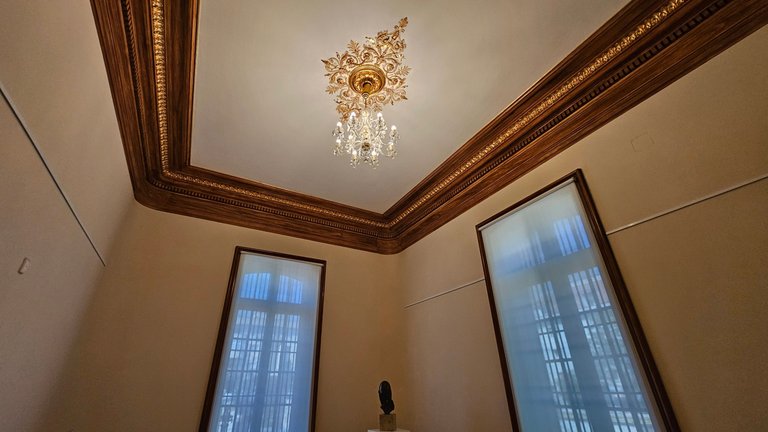
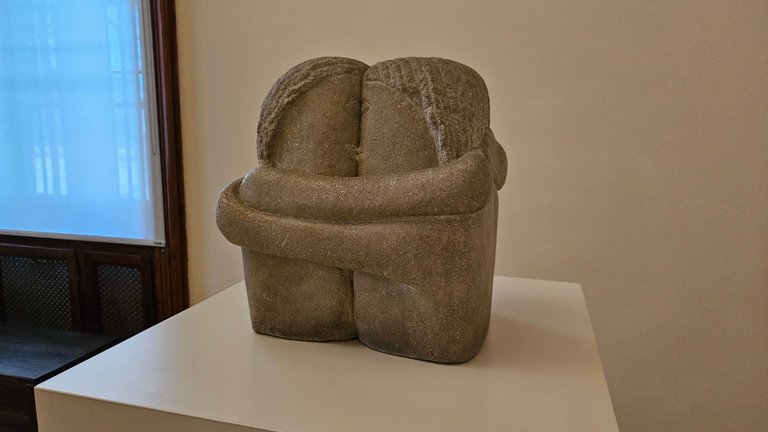

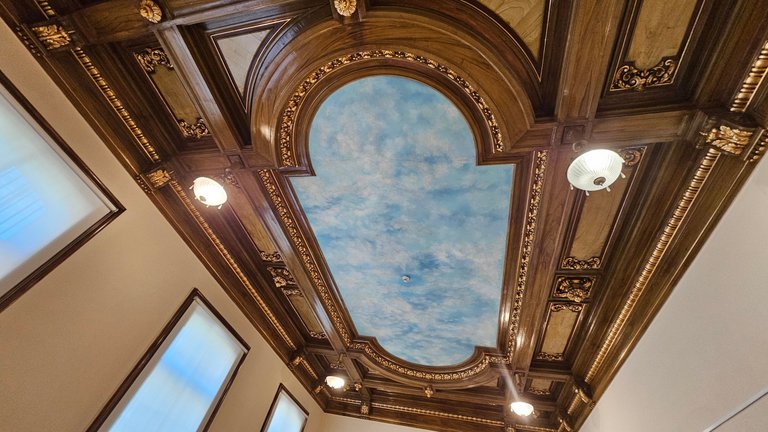
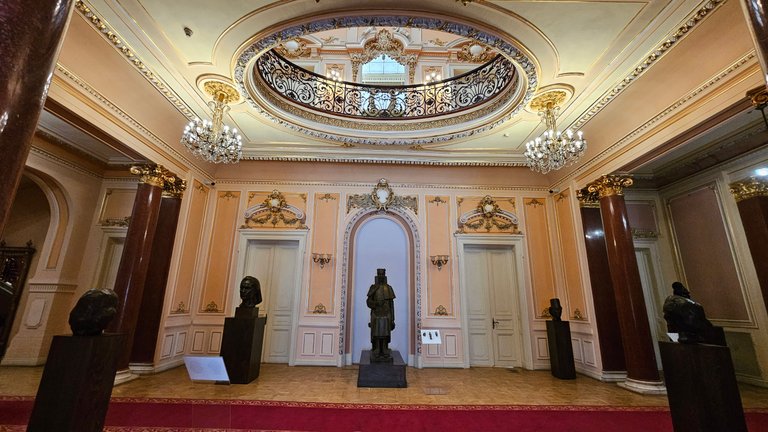


To better understand the importance of this place I leave below some information that I found about the Craiova Art Museum.
Built between 1898 and 1907, in the midst of a city gripped by the renovation fever of the early 20th century, Michael Palace stands out for its details of execution, which have the distinction of a jewel of painstaking craftsmanship. It reflects the pretensions and social status of one of the wealthiest men of the time, as well as the ambition and competitive spirit that helped him make his fortune. So if Ghe. Grigore Cantacuzino, nicknamed "Nababul", in Bucharest, and the royal counselor Vălimărescu, on the same street, had entrusted the construction of their houses to the famous architect Albert Galleron, who had designed, among other important buildings in the Kingdom, the Romanian Athenaeum, Constantin Mihail, did not leave himself behind. He turned to another famous name of the time: Paul Gottereau, the architect of the Royal House and the author of the Royal Palace, the "Carol I" University Foundation Palace, the CEC Palace.Reflecting the dominant trend of the time, that of an eclecticism that successfully combined the rigour of French academicism with late Baroque elements, the building plan has many similarities with that of the Cheverny Palace in the Loire Valley, recognized as an example of architectural balance and elegance. Details of the exterior, such as facade ornaments, window frames and balcony fittings, prepare the eye for the truly grand interior. In the hall of honor, the reception rooms, the music room, the dining rooms and all the other non-worldly areas, the building materials were of the highest quality: Carrara marble, Murano crystal, Venetian mirrors, decorative ironwork, Lyon silk, gilded stucco, furniture and objets d'art, many of which were sourced from Vienna, largely through the wealthy Dumba family, with whom Constantine Michael was closely related. But it is not only these standards of luxury that impress. There are skylights and large windows designed to give the space plenty of natural light, as well as technical features relating to the comfort of the dwelling, which were exceptional for the period, including electricity and 'Roman-style' central heating with pipes in the walls and floor. The palace has 29 rooms (plus offices), the most spectacular of which is the Hall of Mirrors.
Inaugurated in 1909 by his two sons, Nicolae and Jean, since Constantine Mikhail had died the year before, the Palace began its mission of representation, for which it had been intended from the beginning. Jean Mihail was cultured and far-sighted. He had studied law in Paris and wanted to pursue a political career. As a prominent member of high society and a member of the inner circle of the court, he hosted the royal family at the palace in 1913 for the unveiling of the monument 'Asta-i musica che me piacere' (This is the music I like), named after Charles I's reply to the cannon shots that started the War of Independence in 1877. The monument was destroyed soon after the communists came to power.
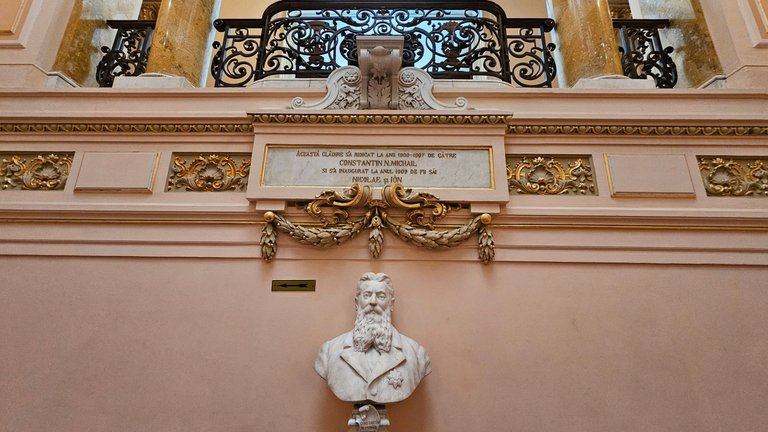
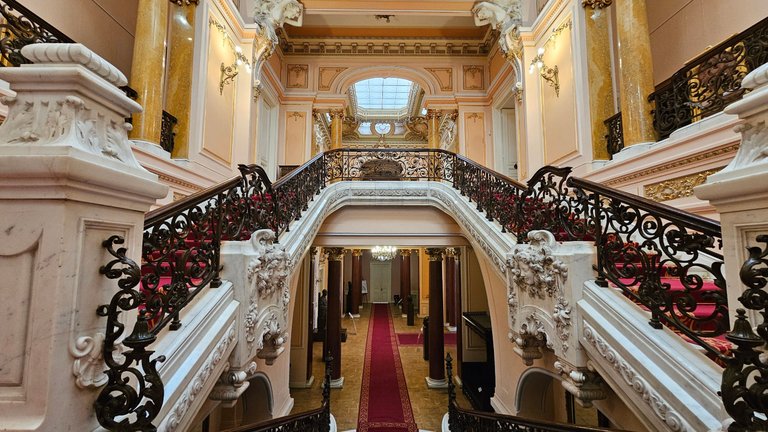
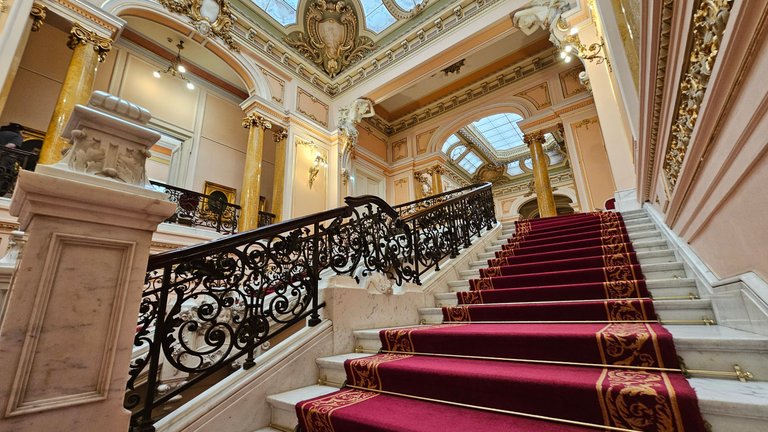

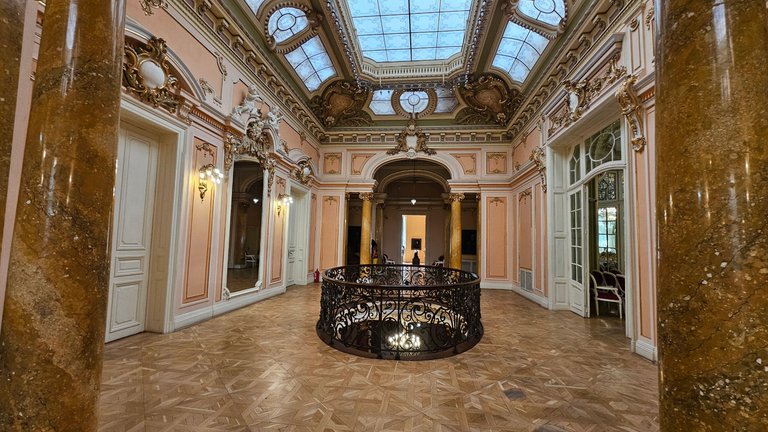

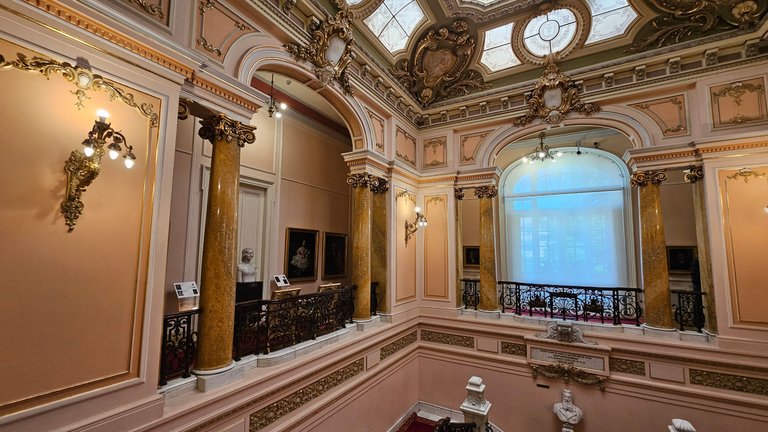
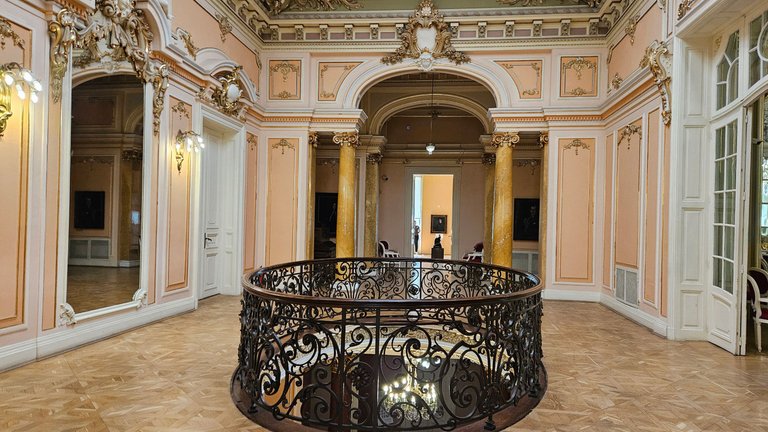
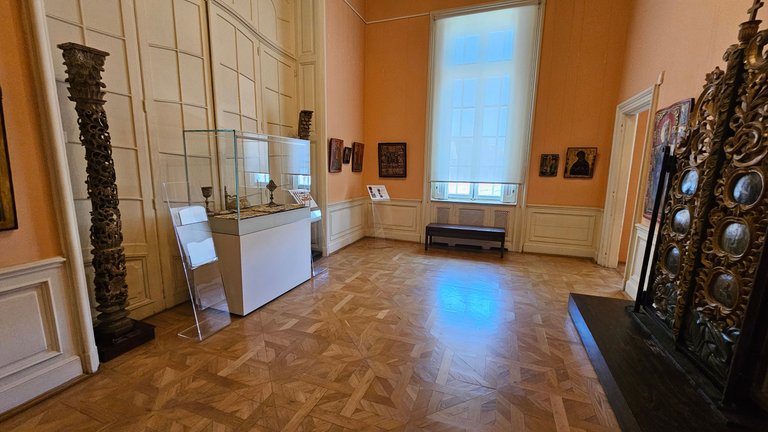
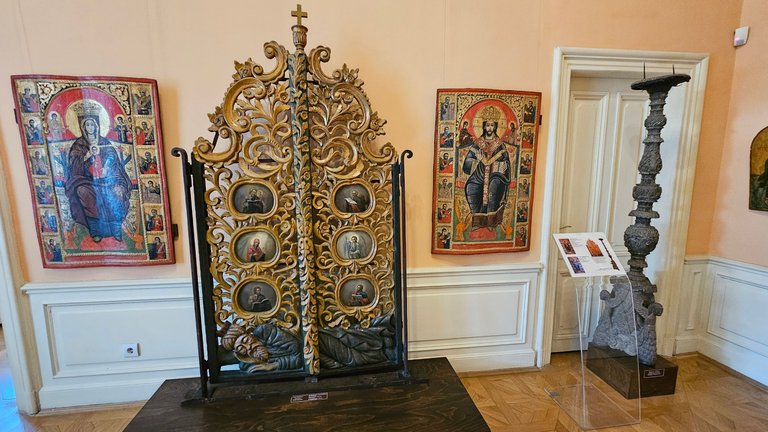
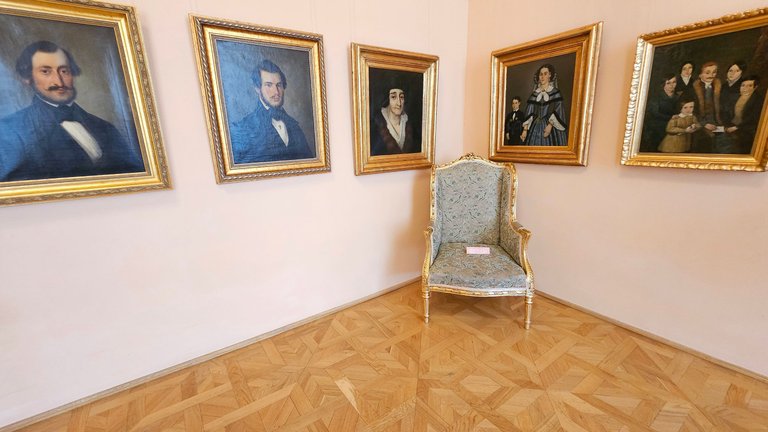

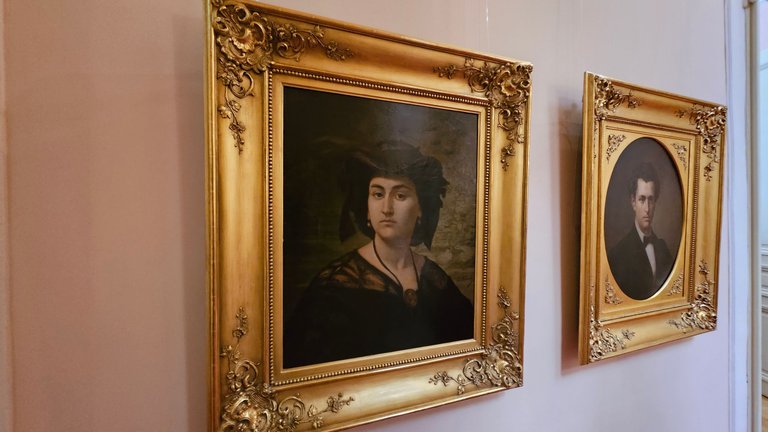
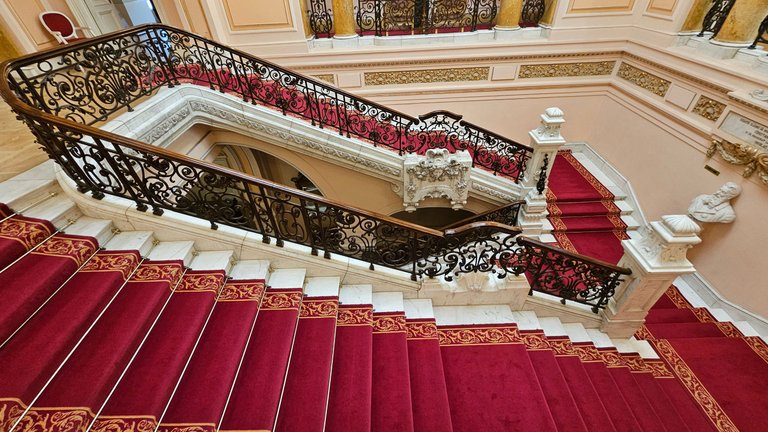

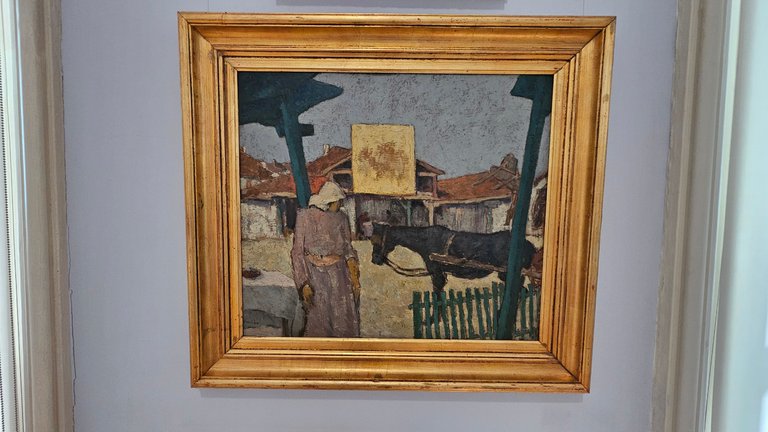
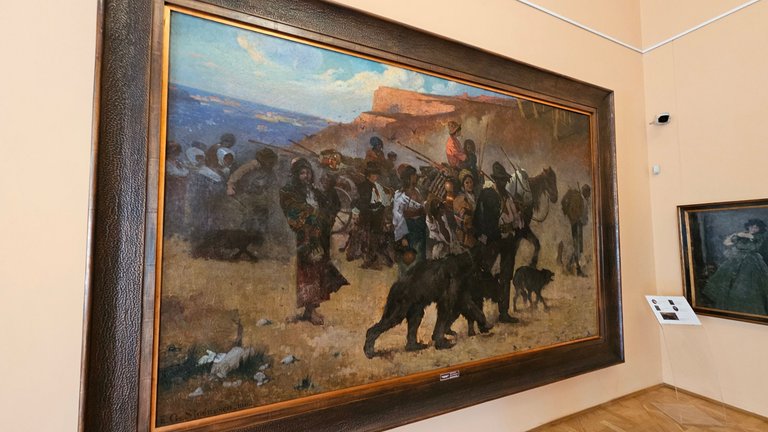
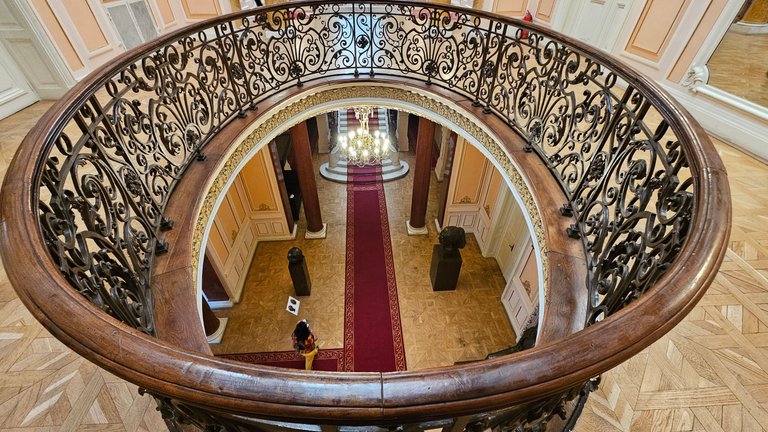
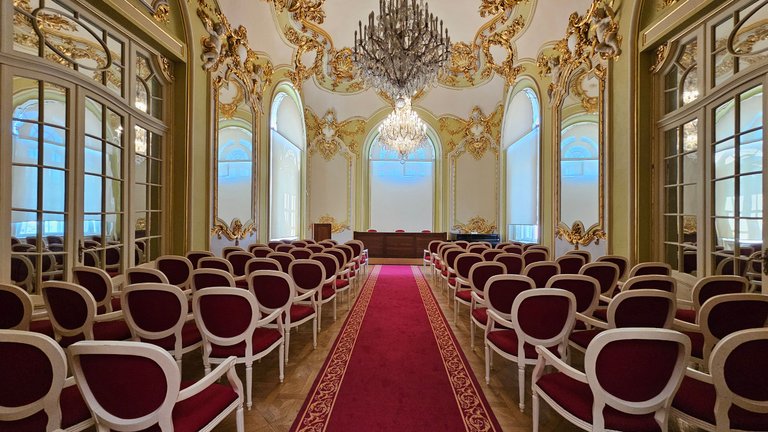

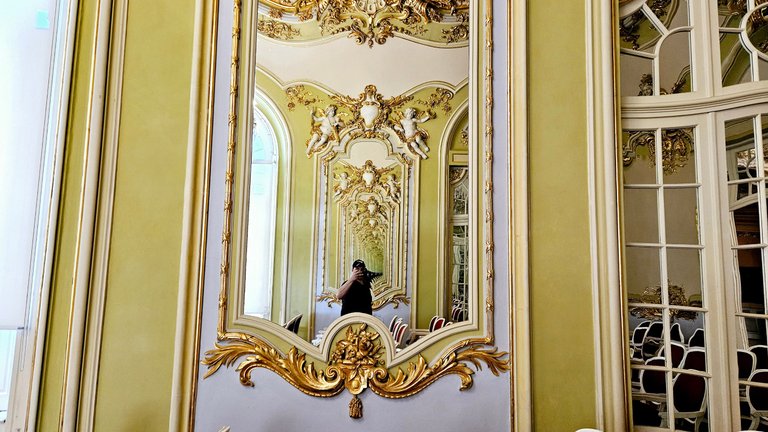
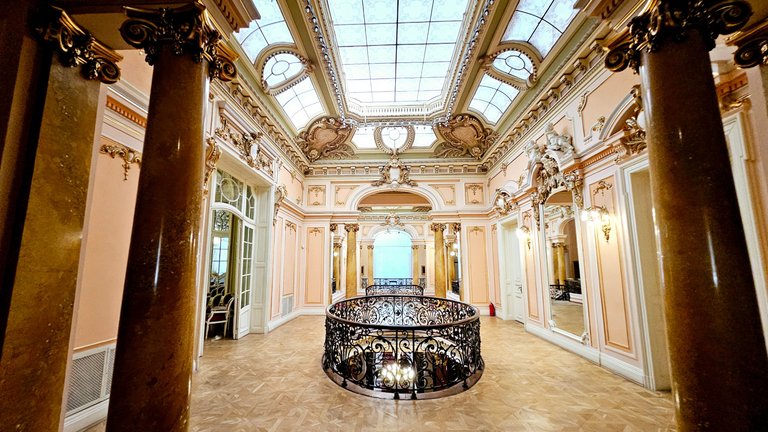

My dears, you can spend a few hours here admiring works of art, but also learning a lot about what each one represents and who made it.
THE END!
If you liked what you saw and read here please don't forget to give a LiKe, Follow, reBlog or a Comment, for all this I thank you, and until the next post I say goodbye.
P.S. The attached picture you have just seen are taken by me with my mobile phone(Samsung Galaxy S21), and the text is also designed by me.
Yours @triplug😉
You can check out this post and your own profile on the map. Be part of the Worldmappin Community and join our Discord Channel to get in touch with other travelers, ask questions or just be updated on our latest features.
Thank you very much.
Hey @triplug you are welcome.
Thanks for using @worldmappin 😘
🥰
Hey mate, I wanted to give you some TipU votes on the previous post about the village museum with those spectacular mountain views but I didn´t make it in time so let me drop them here instead ;) This museum is also very nice, thanks for showing us around!
@tipu curate 10
Upvoted 👌 (Mana: 0/75) Liquid rewards.
Aww thanks, no worries mate, really the view of the mountain is fantastic, I'll write another travel blog about the village of Rimetea, it is said to be the most beautiful village in Romania, I will try to present the local life there(in fact there will be two blogs one about a very old water mill and the second one will be about local life in the village of Rimetea).
Thank you very much for TipU votes😉
Hi @triplug!
This museum is very nice, thanks for showing us.
I'm glad you stopped by, thank you.
This art museum is very beautiful, the architecture is very cool inside it has a very charming look I really like it my friend ❤️🙏
I'm glad you stopped by, thank you mate.
Hiya, @lauramica here, just swinging by to let you know that this post made it into our Honorable Mentions in Travel Digest #2574.
Your post has been manually curated by the @worldmappin team. If you like what we're doing, please drop by to check out all the rest of today's great posts and consider supporting other authors like yourself and us so we can keep the project going!
Become part of our travel community:
Thank you very much.
You are very welcome @triplug! it was well deserved. ☀️
Keep up the great work 💪
🥰
This museum and the architecture of this huge building. Romania is also beautiful
I'm so glad you liked it and thank you for stopping by.
Wow this is a stunning building. I like the hugging on in stone. Those staircases too!
I'm very glad you liked it, and yes, the building is very impressive and has a lot of artworks on display, the main attraction are those massive stone stairs, I saw a lot of people taking pictures there.
Thank you very much for visiting.